Training your dog to use an indoor potty can be a game-changer for both convenience and hygiene. Whether you live in an apartment, have a busy schedule, or simply want to avoid those late-night outdoor trips, teaching your dog to go potty indoors is a practical solution. This guide will walk you through the steps to successfully train your dog to use an indoor potty, ensuring a clean and stress-free environment for both you and your furry friend.
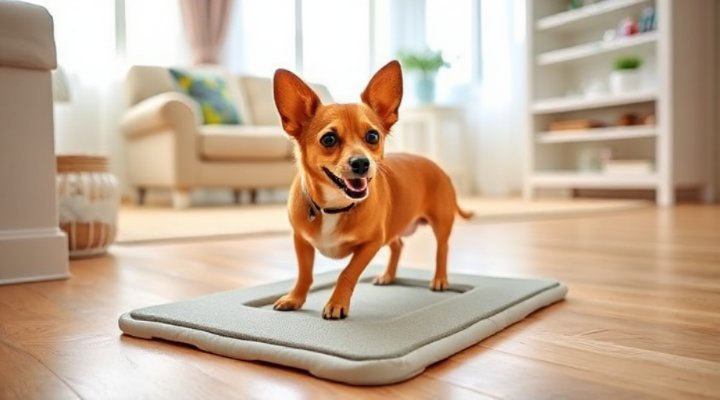
Why Consider an Indoor Dog Potty?
There are several reasons why an indoor dog potty might be the perfect solution for you and your pet. For apartment dwellers, it eliminates the need for multiple daily trips outside. During extreme weather conditions – be it scorching heat or freezing cold – it provides a comfortable alternative for your dog. Moreover, for puppies who haven’t completed their vaccination schedule or dogs recovering from surgery, an indoor potty offers a safe elimination option.
That said, it’s important to remember that while indoor potty training is convenient, it shouldn’t completely replace outdoor bathroom breaks when possible. Dogs benefit from the mental stimulation and exercise that comes with outdoor walks. Think of indoor potty training as a helpful supplement to your dog’s routine rather than a complete replacement.
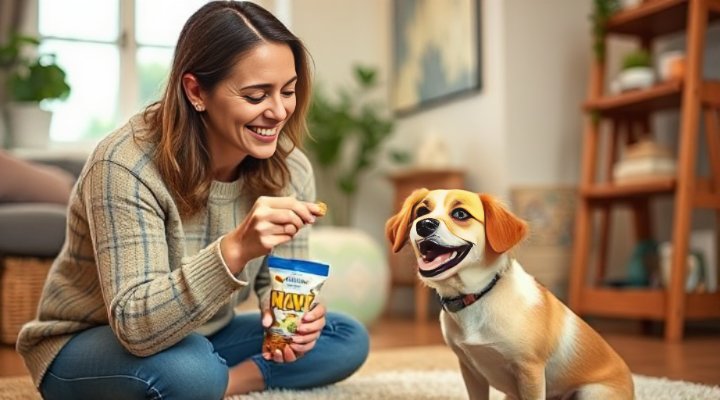
Choosing the Right Indoor Potty Solution
When it comes to indoor dog potties, you’ll find several options in the market. The most common include:
- Potty pads: These absorbent pads are easy to use and dispose of, making them perfect for small dogs or temporary use.
- Artificial grass systems: These mimic the outdoor experience and can be particularly helpful for dogs transitioning from outdoor to indoor potty use.
- Litter boxes: Some small dog breeds can be trained to use litter boxes similar to cats.
- Combination systems: These often include a tray with either pads or grass, providing containment and easy cleanup.
When choosing your indoor potty solution, consider your dog’s size, your living space, and how easy the system is to maintain. For more tips on potty training basics, check out our simple steps guide.
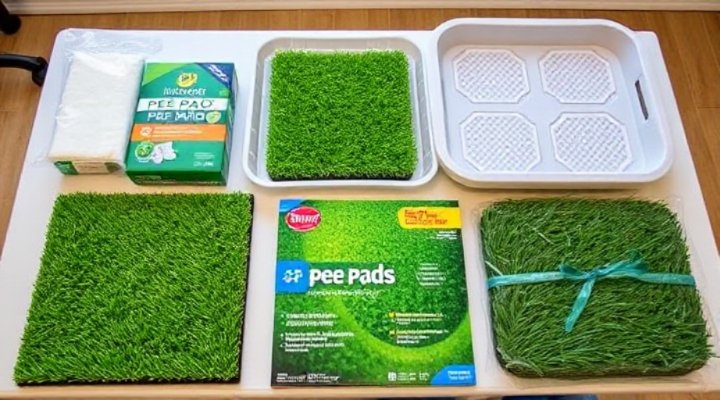
Step-by-Step Indoor Potty Training
1. Establish a Designated Potty Area
Choose a quiet, low-traffic area in your home for the indoor potty. Consistency is key – always bring your dog to the same spot when it’s time to go. This helps create a clear association in your dog’s mind between the location and the act of elimination.
2. Create a Routine
Dogs thrive on routine. Take your dog to the potty area:
- First thing in the morning
- After meals
- After naps
- Before bedtime
- Every 2-4 hours for puppies
This regular schedule helps prevent accidents and reinforces the desired behavior. For puppies, our puppy training schedule offers additional guidance.
3. Use Verbal Cues
Introduce a specific phrase like “go potty” when your dog is eliminating. Over time, this verbal cue will help your dog understand what’s expected. Be consistent with your wording and tone.
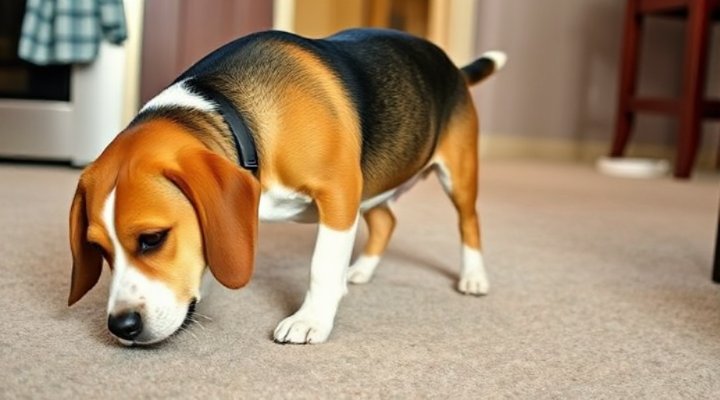
4. Reward Success Immediately
When your dog uses the indoor potty correctly, offer immediate praise and a small treat. This positive reinforcement helps your dog associate the behavior with good outcomes. Keep treats nearby so you can reward instantly.
5. Handle Accidents Properly
If accidents happen (and they will during training), clean the area thoroughly with an enzymatic cleaner to remove all traces of odor. Never punish your dog for accidents – this can create anxiety around elimination. Instead, simply redirect to the proper spot.
6. Gradually Increase Independence
As your dog becomes more reliable, you can begin giving more freedom in the house. Start by allowing short periods unsupervised near the potty area, then gradually expand their access as they demonstrate consistent good habits.
For dogs showing resistance to training, our guide on dog behavior training might offer helpful insights.
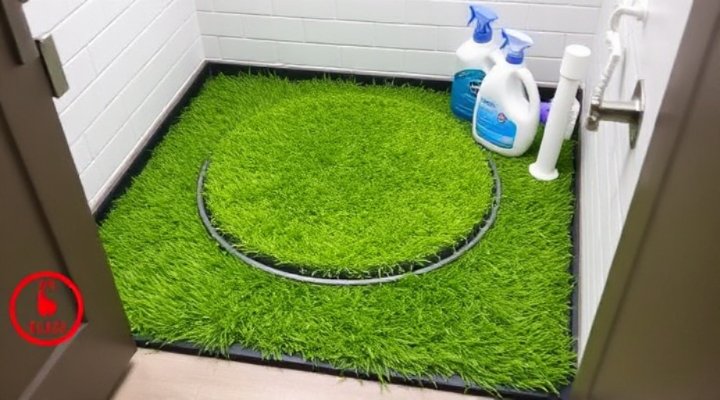
Maintaining Hygiene with an Indoor Potty
Keeping the indoor potty area clean is crucial for both your dog’s willingness to use it and your home’s hygiene. Here are some maintenance tips:
- Clean solid waste immediately
- Replace pads or clean trays at least once daily
- Wash artificial grass weekly with mild soap
- Use pet-safe disinfectants
- Consider placing the potty area on an easy-to-clean surface
A clean potty area will be more inviting to your dog and help prevent odors in your home. Remember, dogs are naturally clean animals and may avoid a dirty potty area, leading to accidents elsewhere.
Troubleshooting Common Challenges
Even with the best training, you might encounter some hurdles. Here’s how to address common issues:
Problem: Dog avoids the indoor potty
Solution: Try moving the location, changing the type of potty, or using attractant sprays designed to encourage dogs to eliminate in specific areas.
Problem: Dog uses the potty but still has accidents
Solution: Re-examine your schedule – your dog may need more frequent potty breaks. Also ensure you’re thoroughly cleaning accident spots to remove all scent markers.
Problem: Dog chews or plays with the potty pads
Solution: Consider switching to a different style of potty or use a holder that keeps pads more secure. Provide appropriate chew toys as alternatives.
For more specialized training needs, you might consider professional help from a dog trainer.
Transitioning from Outdoor to Indoor Potty
If your dog is already accustomed to going outside, transitioning to an indoor potty requires patience. Start by placing the indoor potty near the door you typically use for outdoor potty breaks. Gradually move it to your desired location over several days or weeks. You can also bring some outdoor scent inside by placing a bit of soiled grass on the indoor potty to help with the transition.
Final Thoughts
Training your dog to use an indoor potty requires consistency, patience, and plenty of positive reinforcement. While it might take some time initially, the convenience it offers makes the effort worthwhile. Remember that every dog learns at their own pace, so don’t get discouraged by setbacks. With time and practice, your dog will master this useful skill, making life easier for both of you.
For more comprehensive training guides, explore our complete dog behavior training resources.
Related Keywords: indoor dog toilet, house training dogs, puppy pad training, dog bathroom solutions, apartment dog potty training

